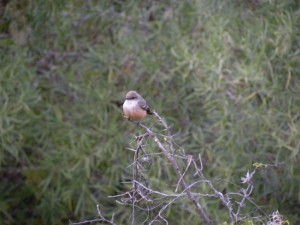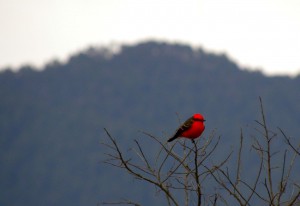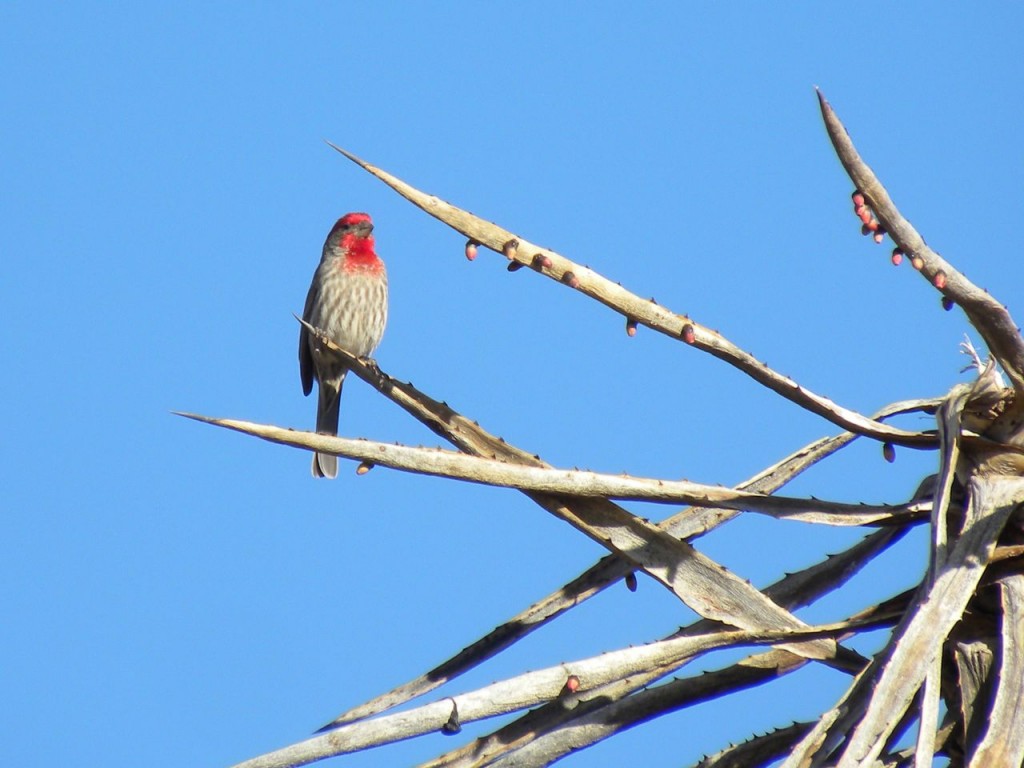We’re staying at the home of a rug weaver and natural dyer in Teotitlan de Valle, Oaxaca, Mexico. As we settled in to our accomodation I was more than a little surprised to see that our host had a copy of the Guide to the Birds of Mexico and Northern Central America. No field guide this one, it’s 850 pages of all you need to know about the 1070 species you just might run in to. He has a great story to tell how he came to be the proud owner of this marvellous book, the upshot of which is that he was given it as a gesture of thanks for services rendered to a group of itinerant birders. Discovering this resource got us off to a good start. He readily understood where my interests lay and volunteered to take me to a nearby watercourse and reservoir at cockcrow this morning; I quickly accepted.
So this morning he dropped off a small group of us at a pond edge, explained the lay of the land and then left us to explore on our own and walk the kilometer or so back in time for breakfast. It was a perfect arrangement, his only caution to us was to watch out for rattlesnakes.
I ended up going there twice today, morning and late-afternoon, it was so good. The Bird of the Day was easily the Vermillion Flycatcher; there were dozens of them. If they weren’t so splendid, both males and females, I could almost have become quite dismissive and shrugged them off, but they are really cool birds. The male is an eye-popping scarlet and black number while the female is, if anything, even more beautiful in a subtly delicious way. The photos will explain better than I possibly can.


There were many more memorable sightings. In the morning the small bushes along the creek held many Wilson’s Warblers, Aztec Doves and a Black Phoebe. A Northern Mockingbird caught my attention atop a cactus and moments later a strikingly handsome House Finch perched nearby.
A group of White-throated Towhees was scratching for seeds along the dusty farm track on my evening walk. Later a couple of Loggerhead Shrikes, a small group of Greater Kiskadees and a hovering Laughing Falcon made for a great spontaneous birding trip. I even managed to find a quiet place to sit and watch to see what might pop up but the light started to fail, so I headed back. And, by the way, no rattlesnakes.
